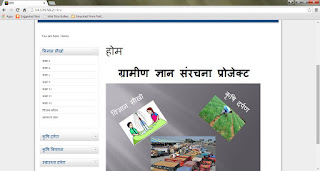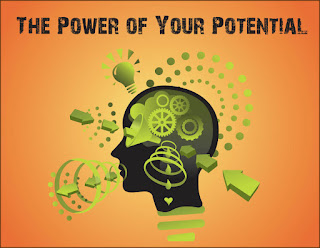भोजन के सम्बन्ध में २४ उपयोगी सूत्र
१. आमाशय के तीन भाग १/३ ठोस, १/३ अर्धतरल, १/३ खाली।
२.
नियत समय नियत मात्रा।
३.
ईश्वर ध्यान के बाद भोजन ग्रहण करना तथा भोजन के समय प्रसन्नचित्त रहना।
४.
भोजन की मात्रा अपनी शक्ति के अनुकूल ही लेनी चाहिए।
५.
जिस भोजन को देखने से घृणा/अरूचि हो ऐसा भोजन नहीं खाना चाहिए।
६.
बासी भोजन से आलस्य और स्मरण शक्ति में कमी होती है।
७.
शरीर ताप से थोड़ा अधिक गर्म भोजन लाभकारी है, जल्दी पचता है वायु
निकालता है
जठराग्नि प्रदीप्त करता है। कफ शुद्ध करता है।
८.
जली हुई रोटी सार हीन होती है। कच्ची रोटी पेट में दर्द अजीर्ण उत्पन्न करती
है।
९.
भिन्न मौसम या समय पर भोजन में परिवर्तन भी आवश्यक है।
१०.
अधिक गर्म या अधिक ठण्डा भोजन दांतों के लिए हानिकारक होता है।
११.
भोजन में कुछ चिकनाहट भी आवश्यक है।
१२.
भोजन में अन्तर छः घन्टे का। तीन से कम नहीं होना चाहिए।
१३.
३० मिनट से कम समय में भोजन नहीं करना चाहिए।
१४.
क्षार और विटामिन युक्त आहार लें। अर्थात तरकारी और फल की मात्रा गेहूँ, चावल, आल,दाल से तीन गुनी होनी चाहिए।
१५.
घी तेल की तली हुई चीजें कम खानी चाहिए। कटहल, घुइयाँ, उड़द की दाल जैसी भारी चीजें कम ही खानी चाहिए।
१६.
भोजन करते समय हँसना और बोलना ठीक नहीं रहता, इससे श्वांस नली में रुकावट हो सकती है।
१७. प्रातः चाय काफी के बजाय नींबू पानी लेना चाहिए ।।
१८.
थोड़ी भूख रहे तभी भोजन से हाथ खींच लेना चाहिए।
१९.
दोपहर का भोजन करने के पश्चात दस बीस मिनट लेटकर विश्राम करना चाहिए। पर सोना नहीं चाहिए अन्यथा हानि
होगी। शाम को भोजन के बाद कम से कम १.५ कि.मी. टहलना चाहिए।
२०.
शाम का भोजन सोने से तीन या कम से कम दो घंटे पहले कर लेना चाहिए। खाते ही सो
जाने से पचने में गड़बड़ी होती है और नींद भी सुखमय नहीं होती।
२१.
भोजन में एक साथ बहुत सी चीजें होना हानिकारक है। इससे अधिक
भोजन की सम्भावना बन जाती है।
२२.
रसेदार शाक या दाल भोजन में ठीक रहता है। सूखे भोजन से कलेजे में जलन और रक्त
मिश्रण में बाधा पहुँचती है।
२३.
अधिक चिकनाई भी हानिकारक है। केवल विशेष श्रमशील व्यायाम वालों के लिए ही ठीक
है।
२४.
खाने को आधा, पानी को दूना, कसरत को तीन गुणा और हंसने को चौगुना करो। केवल पचने पर ही पोषण मिलता है।
हमें कितना और कब -- कब खाना चाहिये?
एक सामान्य व्यक्ति
को हर रोज लगभग २००० कैलोरी का भोजन करना चाहिये। जिस व्यक्ति के शारीरिक श्रम अधिक हो वह १०- २० प्रतिशत अधिक अर्थात २२००- २४०० कैलोरी खा सकता है।
जिनका शारीरिक श्रम कम हो उन्हें १०- २० प्रतिशत कम अर्थात १६००- १८०० कैलोरी का भोजन पर्याप्त है। पर अक्सर कैलोरी का माप रख पाना आसान नहीं
होता।
अतः दूसरा नियम यह अपनाया जा सकता है कि जितनी भूख हो
उससे कम खाना चाहिये, या दूसरे शब्दों में
खाते- खाते भारी लगने लगे उसके पहले खाना छोड़ देना चाहिये।
कब- कब खाना चाहिये?
सामान्य व्यक्ति को
दिन में दो समय का भोजन पर्याप्त माना जाता है।
श्रमशील लोगों को प्रातः व्यायाम के बाद पौष्टिक
नाश्ता करना चाहिये। उसके लगभग ४- ५ घंटे बाददुपहर का भोजन। उसके ३- ४ घंटे बाद हलका सुपाच्य नाश्ता (फल, सलाद या अन्य) और शाम
को सूर्यास्त के आसपास, सोने से २/३ घण्टे पहले हलका भोजन श्रेष्ठ माना जाता है।
सुबह उठते ही उषा पान (पानी), दुपहर में भोजन के कुछ देर बाद छाछ तथा रात में सोने के पहले उष्ण दूध पीना अमृत
सरीखा माना गया है।
अच्छा स्वास्थ्य कैसे?
अच्छे स्वास्थ्य के लिये तीन चीजें मुख्य होती हैं :-
१.भोजन २.व्यायाम ३.आराम
यदि अच्छे स्वास्थ्य का पूरा पेपर १०० नम्बर का हो तो भोजन, व्यायाम और आराम
तीनों सेक्शन३०- ३० नम्बर के मान सकते हैं, १० नम्बर ग्रेस- मार्क्स दवाई वगैरह का रख सकते हैं
जो किसीसेक्शन में थोड़ी लापरवाही हो जावे तो काम में ले सकते हैं।
पास होने के लिये हर सेक्शन (भोजन, व्यायाम, आराम )) में पास होना जरूरी है। यह नहीं कि
भोजन में तो २५- ३० नंबर ले आये और व्यायाम, आराम में ५- ४ नंबर ले आये। इस तरह पास नहीं हो सकते।
स्वस्थ रहने के सरल उपाय
१. सुबह जल्दी उठो और ३- ४ मील (४- ६ किलोमीटर) रोज टहलो। संभव हो तो शाम को भी थोड़ाटहलो।
२.
टहलते समय नाक से लम्बी- लम्बी सांसें लो तथा यह भावना करो कि टहलने से आप अपने स्वास्थ्य को संवार रहे हैं।
३.
टहलने के अलावा, दौड़ना, साइकिल चलाना, घुड़सवारी, तैरना या कोई भी खेलकूद, व्यायाम के अच्छे
उपाय हैं। स्त्रियां चक्की पीसना, बिलौना बिलोना, रस्सीकूदना, पानी भरना, झाड़ू- पोछालगाना आदि घर के कामों में भी अच्छा व्यायाम कर सकती हैं। रोज थोड़े समय
छोटे बच्चों के साथ खेलना, १०- १५ मिनट खुलकर हंसना भी अच्छे व्यायाम के अंग हैं।
४. प्रातः टहलने के बाद भूख अच्छी लगती है। इस समय पौष्टिक पदार्थों का सेवन
करें। अंकुरित अन्न, भीगी मूंगफली, आंवला या इससे बना कोई पदार्थ, संतरा या मौसम्मी का रस अच्छे नाश्ता का अंग होते हैं।
५. भोजन सादा करो एवं उसे प्रसाद रूप में ग्रहण करो, शांत, प्रसन्न और निश्चिन्तता पूर्वक करो और उसे अच्छी तरह चबाचबा कर खाओ। खाते समय न बात करो और न हंसो। एकाग्र चित्त होकर भोजन करना चाहिए।
६. भूख से कम खाओ अथवा आधा पेट खाओ, चौथाई पानी के लिए
एवं चौथाई पेट हवा के लिए खाली छोड़ो।
७. भोजन में रोज अंकुरित अन्न अवश्य शामिल करो। अंकुरित अन्न में पौष्टिकता एवं खनिज लवण गुणात्मक मात्रा में बढ़ जाते हैं। इनमें मूंग सर्वोत्तम है। चना, अंकुरित या भीगी मूंगफली इसमें थोड़ी मेथी दाना एवं चुटकी भर- अजवायन मिला लें तो यह कई रोगों का
प्रतिरोधक एवं प्रभावी ईलाज है।
८. मौसम की ताजा हरी सब्जी और ताजे फल खूब खाओ। जितना हो सके कच्चे खाओ अन्यथा
आधीउबली/ उबली तथा कम मिर्च- मसाले, खटाई की सब्जियां खाओ। एक ग्रास रोटी के साथ चार ग्रास सब्जी के अनुपात का प्रयास रखो।
९. आटा चोकर समेत खाओ, सम्भव हो तो हाथ का
पिसा हुआ खाओ। जौ, गेहूं, चना, सोयाबीन कामिस्सी रोटी का आटा सुपाच्य एवं पौष्टिक होता है। पौष्टिकता की दृष्टि से रोटी में हरी सब्जी, पालक, मेथी ,,
बथुआ आदि पत्तीदार सब्जी मिलाकर बनायें / खायें। दलिया / खिचड़ी में भी पत्तीदार एवं हरी सब्जियाँ मिलाकर पौष्टिकता बढ़ाई जा सकती है। सब्जियों के सूप का नित्य सेवन पौष्टिक एवं हलके भोजन का
अच्छा अंग हो सकता है।
१० भोजन के साथ पानी कम से कम पीओ। दोपहर के भोजन के घंटे भर बाद पानी पियें
।। भोजन यदि कड़ा और रूखा हो तो २- ४ घूंट पानी अवश्य पियें।
११. प्रातः उठते ही खूब पानी पीओ। दोपहर भोजन के थोड़ी देर बाद छाछ और रात को
सोने के पहले उष्ण दूध अमृत समान है।
१२. दिन में कम से कम दो लीटर पानी अवश्य पीओ।
१३. धूम्रपान, मादक पेय- पदार्थ (जरदा, गुटखा, सॉफ्ट ड्रिंक जैसे कोकाकोला, पेप्सी इत्यादि एवं शराब आदि )) सर्वथा छोड़ दो।
१४. चाय- कॉफी आदि के स्थान पर सादा ठंडा या गुनगुना पानी, नींबू पानी, छाछ, गाजर, पालक चुकन्दर, लौकी, टमाटर इत्यादि सब्जियों का एव मौसम्मी या संतरा, पपीता इत्यादि फलों
के रस का उपयोग लाभकारी होता है।
१५. डाइबीटीज (शक्कर) के रोगी को शक्कर या उससे बने पदार्थों से पूर्ण परहेज करना चाहिए।
फलों में अधिक मीठे फल का सेवन कम करें। फल के रस के बजाय फल खायें ।।
१६. दानामेथी और करेला डाइबीटीज की रामबाण दवा हैं। इनका रोज उपयोग करें। दानामेथी रोज१८/२४ घंटे पानी में, जहां तक संभव हो सके मिट्टी के बर्तन में भिगोयें। दूसरे दिन सुबह नाश्ते के पहले या बाद में दानामेथी का पानी पी लें। दानामेथी अंकुरित कर सलाद में या नमक, नींबू लगाकरभी खा सकते हैं। सूखी दानामेथी या इसका चूरा लेने पर गर्मी कर सकती है।
१७. भोजन में स्वाद बढ़ाने वाली चीजें जैसे मिर्च, प्याज, लहसुन, खटाई इत्यादि का प्रयोग कम से कम करें, हो सके तो छोड़ दें।
१८. रोज शाम निवृत्त हो जाने के बाद, दिनभर में अपने पुरूषार्थ से किये काम- काजों की सफलता अथवा असफलता प्रभु को समर्पित कर, निश्चिंत होकर, जल्दी सोंये ताकि सुबह भोर में उठ सकें ।



































